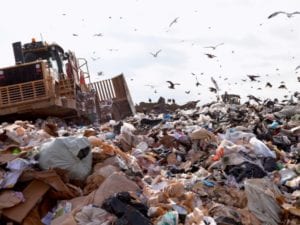Experts have called for changes in the way municipalities dispose of waste in South Africa, saying that up to 90% of waste goes to landfills.
Most of these landfills are uncontrolled dump sites. Council for Scientific and Industrial Research (CSIR) principal scientist: waste and circular economy Professor Linda Godfrey called for a change in the way waste is managed in the country. “We see the disposal of hazardous waste to municipal landfills and to disposal sites that don’t have a licence to take these waste streams. We see poor water management on site, or no water management at all. We have open burning of waste,” she told delegates attending the Landfill 2019 conference, in Cape Town. She said many of the dumps in cities and towns throughout South Africa were not controlled or monitored. “Our municipalities are getting away with far too much when it comes to dump sites. We have to enforce legislation and shift the needle towards engineered landfills.”Engineered landfills are properly designed and engineered. They have a barrier layer between the land and the waste, and usually have some kind of landfill gas system. The waste is compacted daily and covered properly.
“There’s a lot of technology that goes into a properly engineered landfill site to essentially minimise its impact on the environment. It is expensive, but we need to do it.” Godfrey suggested diverting three specific waste streams away from municipal landfill sites. These were paper and packaging, organic waste and construction and demolition waste. These three make up a huge slice of waste. “If we implement a strategy where we are diverting potentially 60% to 70% of our waste, it leaves just that last 30% for municipalities to deal with.” Godfrey suggested establishing public–private partnerships, where companies take up this role and dispose of this waste in properly controlled engineered landfills. “We need to ask whether we can close the dump sites we have and transition to fewer, better engineered dump sites that we can properly manage and monitor, and that are better designed.”







